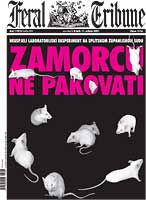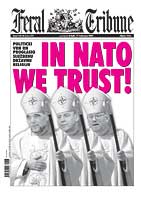

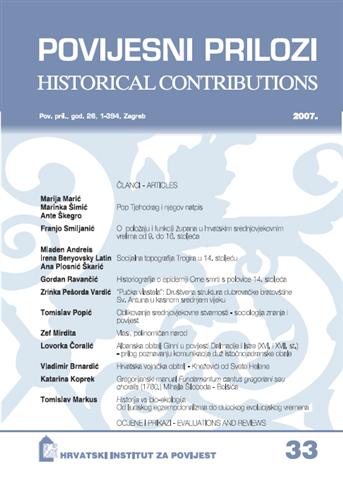
Keywords: Podvornice; Lištani; Livno; Bosnien und Herzegowina; Katholische Kirche; glagolitische Priester (glagoljaši); Kroatische kyrillische Inschriften; Tjehodrag
Während der archäologischen Forschungen an der Lokalität Podvornice in Lištani (im Südwesten des Livno-Feldes) wurde eine Inschrift in der kirchlich-slawischen Sprache der kroatischen Redaktion gefunden, wo in kroatischer Kyrilliza ein Diözesanprister namens Tjehodrag und seine fünf Söhne erwähnt wurden. Viele archäologische Funde, die von dieser Lokalität stammen, zeugen von einem kontinuierlichen Leben in diesem Raum seit der römischen Antike bis zum Spätmittelalter. Zwei Zeilen dieser Inschrift bestehen aus 15 slawischen Lexeme und einem alten Lehnwort popъ. Ähnliche gemischte glagolitisch-kyrillische Denkmäler entstehen an der Wende des 12. Jahrhunderts. Allem Anschein nach stammt diese Inschrift aus der ersten Hälfte des 12. Jahrhunderts und gehört zu den ältesten Inschriften, die in kroatischer Kyrillize geschrieben wurden. Eine vorzügliche Ausarbeitung weist darauf hin, dass die Steinmetzarbeit auf dem Livno-Gebiet eine hundertjährige Tradition hatte.
More...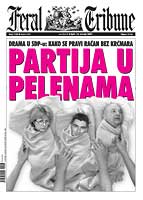
Miguel Abensour Demokracija protiv države. Marx i makijavelijevski moment Disput, Zagreb, 2007., 194 str. Igor Lukšič Politična kultura. Političnost morale Fakulteta za družbene vede, Ljubljana, 2006., 109 str. Tihomir Ponoš Na rubu revolucije – studenti ‘71. Profil, Zagreb, travanj 2007., 219 str. Charles Patterson Vječna Treblinka. Naše postupanje prema životinjama i holokaust Genesis, Zagreb 2005., 289 str.
More...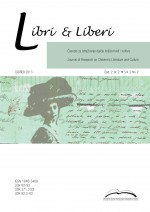
Keywords: book review; Cynthia J. Hallett; Peggy J. Huey; J.K. Rowling: Harry Potter;
This is a book review of "J.K. Rowling: Harry Potter". In the book, Cynthia J. Hallett and Peggy J. Huey gathered thirteen “brand new essays” in order to provide insight into the complete Harry Potter series (1997-2007) from a variety of critical angles and approaches.
More...
Keywords: book review; Andrew O’Malley; Children’s Literature; Popular Culture; and Robinson Crusoe;
This is a book review of Andrew O’Malley’s latest book dealing with historical reasons for which Robinson Crusoe" has featured most prominently and circulated most widely in the fields of children’s literature and popular culture certainly sheds new light on this classic work. The book is called "Children’s Literature, Popular Culture, and Robinson Crusoe".
More...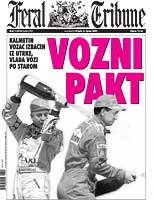
Keywords: 1999 Elections in Croatia;
an analysis of the finalr resutls of the 1999 elections to the Croatian National Parliament
More...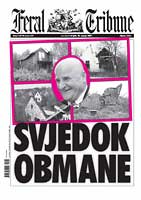
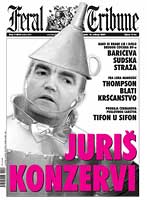
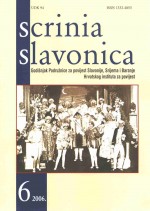
Keywords: Book reviews (see summary).
The Customary Law of the Renowned Kingdom of Hungary: A Work in Three Parts Rendered by Stephen Werbőczy (The “Tripartitum”), prir. J. M. Bak, P. Banyó i M. Rady, Idyllwild CA – Budimpešta, 2005. (Marija Karbić); Radmilo Petrović, Rečnik vizantijske hristijanizacije, Beograd– Kosovska Mitrovica, 2004. (Danijel Jelaš); Pejo Ćošković, Susret sa zagubljenom poviješću: područje Bosanske Gradiške u razvijenom srednjem vijeku, Zagreb, 2001. (Danijel Jelaš) ; Zbornik o Antunu Vrančiću. Zbornik radova sa znanstvenog skupa o Antunu Vrančiću, Šibenik, 11-12. lipnja 2004., Šibenik, 2005. (Stanko Andrić); Antun Dević, Đakovačka i Srijemska biskupija – Arhiv Kongregacije za širenje vjere. Razni fondovi, 17-18. stoljeće, Zagreb, 2005. (Ante Sekulić); Hrvoje Petrić, Koprivnica u 17. stoljeću: okoliš, demografske, društvene i gospodarske promjene u pograničnom gradu, Samobor, 2005. (Dragan Damjanović); Željko Holjevac, Brinjsko-lički ustanak 1746., Samobor, 2004. (Željko Karaula); Eugen Kvaternik, Hrvatski glavničar ili Putokaz k narodnjoj obrtnosti a kroz ovu k narodnjemu blagostanju, Zagreb, 2005. (Milan Vrbanus); Nira Yuval-Davis, Rod i nacija, prev. Mirjana Paić Jurinić, Zagreb, 2004. (Dinko Župan); Matošiana I, prir. I. Frangeš i D. Tadijanović, Zagreb, 1994. (Katica Čorkalo) Partizanska i komunistička represija i zločini u Hrvatskoj 1944.-1946. Dokumenti, prir. Z. Dizdar et al., Slavonski Brod, 2005. (Ante Sekulić); Roland Kaltenegger, Titos Kriegsgefangene – Folterlager, Hunger märsche und Schauprozesse, Graz – Stuttgart, 2001. (Martina Grahek Ravančić); Alojz Buljan i Franjo Horvat, Žrtve Drugoga svjetskog rata i poraća na području bivše općine Novska (Grad Novska i općine Jasenovac i Lipovljani), Novska, 2005. (Šimun Penava); Nikica Barić, Srpska pobuna u Hrvatskoj 1990-1995., Zagreb, 2005. (Ivica Miškulin); Više autora, Dr. Šreter – Svjedočanstva, Zagreb, 2005. (Ivica Miškulin); Stribor Uzelac-Schwendemann, Glavni gradski trg u Slavonskom Brodu, Slavonski Brod, 2005. (Ivan Jelić); Stoljetnica života i rada Milosrdnih sestara svetoga Križa na Sušaku, ur. E. Radičević i E. Hoško, Rijeka – Đakovo, 2005. (Ivan Medved); Marko Ančić i Borislav Bijelić, Hrvatska seljačka stranka Ogranak Vrpolje 1924.-2004., Vrpolje, 2005. (Branko Ostajmer); Dragutin Kerže i Alan Kerže, Kuća osječko-baranjskog nogometa (1924. – 2004.), Osijek, 2005. (Borislav Bijelić).
More...
Keywords: Republic of Croatia; Brod – Posavina County; Slavonski Brod; Nova Gradiška; democratic changes; political pluralism; political parties; presidential; parliamentary and local (municipal; town and county) elections.
This paper discusses the elections held in 1992 in what is today the Brod- Posavina County (presidential elections and parliamentary elections for the Chamber of Deputies of the Croatian Parliament), and those held in 1993 (for the Chamber of Counties of the Croatian Parliament and the local elections – county, city and municipal elections). All these elections, the parliamentary and presidential elections, the local elections at municipal, city and county level as well as the elections for the Chamber of Counties of the Parliament of the Republic of Croatia had a feature in common. They were all marked by a relatively short election campaign, which lasted around fifteen days, and a relatively good turnout despite the fact that they (especially the parliamentary and the presidential elections) were held under constant air raid warnings and general raid warnings. In addition, the elections were not held in the entire county, as a part of its territory was not under Croatian jurisdiction. As in the first multiparty elections, the 1992/1993 elections also brought landslide victories to the Croatian Democratic Union (HDZ), i.e. both the presidential candidate and the three candidates elected to the Chamber of Deputies in the election units covered by the municipalities of Nova Gradiška and Slavonski Brod were members of the HDZ. Standing out among the other ‘winners’ in these elections is first and foremost the Croatian Social Liberal Party (HSLS), which thus reinforced its position as the second leading political party in the Brod-Posavina County, and the Croatian Peasant Party (HSS) which achieved remarkably good results in the elections for the municipal counties. Testifying to the upswing of HSS is their absolute victory in several municipalities, which enabled them to independently form units of power in the area concerned. Further, according to the number of municipal council seats, HSS became the second most powerful party after HDZ in five municipalities (Donji Andrijevci, Garčin, Klakar, Oriovac and Podcrkavlje), or it was the only party which won any council seats besides the HDZ. HSS’s success becomes all the more important if one acknowledges the fact that the party was only active in the east part of the former municipality of Slavonski Brod. The Union of the Christian Democratic Party (HKDU) an the Croatian People’s Party (HNS) marked poor results, as did the Social Democratic Party (SDP). Namely, SDP only won three seats in the entire county (two seats on the City Council of Slavonski Brod and a single seat in the County Assembly) out of a total of 427 members elected for the county assembly, city and municipal councils. However, with the support of the Croatian Social Liberal Party (HSLS), dr. Zdravko Tomac (SDP) was elected into the Chamber of Deputies of the Parliament, and the results were slightly improved in comparison to the results achieved in the parliamentary elections...
More...
Keywords: Kingdom of Serbs; Croats and Slovenes / Kingdom of Yugoslavia;; chetnik organizations; Osijek; Osijek district.
Ever since its establishment, the chetnik association, as well as the greatserbian politics at large, included Osijek and the Osijek district within the sphere of their interest. This was not so surprising given that Osijek and its district, as well as all of Slavonia, had always been deemed a part of their myth of Great Serbia. Their attempts to make the myth a reality met with unfailing support of the ruling Serbian expansionist circles, primarily of those from the Radical and the Democratic Party camp, who were the founders of the first chetnik associations in the first place. The administrative partitioning of the Osijek district (extraction of the western areas and foundation of the special Valpovo district) was orchestrated to produce a relative Serbian majority in the newly founded district area. Moreover, after subsequently taking over the government over the new district, they also maneuvered themselves into positions of power in the city of Osijek, which they gradually had to abandon following the 1938 elections and the creation of the Banovina of Croatia. These changes were best reflected in the political trends, and especially in the election results of the time. The chetniks also had a special mission to complete in the Osijek area, given its nationality structure (Croatian and other non-Serb peoples’ majority) and geographical position (along the rivers Drava and Danube, a point of convergence of North-South and East-West traffic routes, but also a link between the Serbs in the East in Vojvodina and Serbia, via the Danube border and the Danube bridge close to Erdut, with those in west Slavonia); the mission was to help the Serbian expansionist authorities first, to suppress the communist movement which had a majority non-Serb membership, especially in Osijek (1920/21), and then, in particular, to suppress the Croatian national movement gathered around the Croatian Peasant Party (HSS), while simultaneously performing a serbisation of the area. As a result of this agenda, eight colonies were established which were populated with about 3.000 mostly Serbian volunteers and where a government was established over which the greatserbian parties had a firm hold until they were forced to relinquish the power following the 1938 elections and the establishment of the Banovina of Croatia.
More...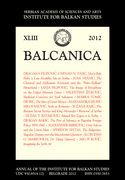
Keywords: Djura Djurović; Yugoslav communist prisons; Yugoslav totalitarianism; Yu-goslav communist courts
The paper deals with the life story of Dr. Djura Djurović (1900-1983), one of key targets of Yugoslav communist totalitarianism. He was a Belgrade lawyer who worked in the Administration of the City of Belgrade before WWII. In 1943 he joined the Yugoslav Home Army (YHA) of General Mihailović, and held high po-sitions in the YHA press and propaganda departments. His duties included run-ning the Radio-telegraphic agency Democratic Yugoslavia. He accompanied General Mihailović on his meetings with OSS Colonel McDowell, and with Captain Raković he established successful co-operation with Red Army units in October 1944. He was arrested by Tito’s partisans in 1945, given a show-trial and sentenced to twenty years in prison. In his writings he described horrible conditions, sufferings and various types of torture used against political prisoners in Yugoslav communist prisons. He himself spent more than two years in solitary confinement, and on several occasions nearly died in prison. He was released in 1962, and was able to establish a circle of former political convicts from the ranks of the YHA and other anticommunists in Belgrade and Serbia. He maintained this network, advocated pro-American policies and hoped that at some point the United States might intervene against communism in Yugoslavia. Gradually he came to the conclusion that Tito was an American ally, and was satisfied to maintain his network of likeminded anticommunists and prepare reports on the situation in Yugoslavia. As a pre-war freemason, he sent one such report to Luther Smith, Grand Commander of AAFM of Southern Jurisdiction of American masons, describing the ghastly conditions in Yugoslav communist prisons. He was rearrested in 1973 on account of his relations with a Serbian émigré in Paris, Andra Lončarić, and spent another four years in prison. Thus, the almost twenty-one years he spent in communist prisons qualify him for the top of the list of political prisoners in Yugoslav communism. In 1962-1973 he was spied on by a network of in-formers and operatives of the Yugoslav secret service. The paper is based on Djurović’s personal files preserved in the penitentiaries in Sremska Mitrovica and Zabela, and his personal file from the archive of the Yugoslav secret service (UDBA/SDB). This is the first paper based on personal files of “political enemies” compiled by the Yugoslav communist secret service, disclosing the latter’s activities and methods against anti-communist circles in Belgrade.
More...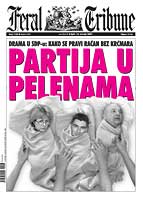
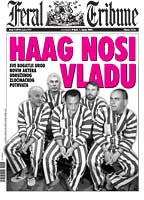
Keywords: protest of student in 1968; Zagreb Faculty of Arts; unsuccessful social and economical reform of the Yugoslav society during th sixties; student opposition; state controlled press; Croatian language; League of Communists of Yugoslavia; Zagreb; Belgrade;
Discontent and protest of students in 1968 was motivated by the unsuccessful social and economical reform of the Yugoslav society during the 1960-ies and also by the declining standard of living which affected the population and especially students. Students tried to influence the institutions of the Yugoslav socialist self-management system and to initiate positive if minimal reforms, but their attempts failed. The key role in silencing the student opposition was played by the state controlled press. State newspapers had already played similar role after the publication of the Declaration on the name and position of the Croatian language. Newspapers didn’t give real information about the student movement and student and youth press was repressed or completely banned by the authorities. Professors and students of the Zagreb Faculty of arts who took part in the protests were later punished by being expelled from the League of Communists of Yugoslavia. The same punishment had been applied to the supporters of the Declaration on the Croatian language. Historical analysis shows that the 1968 student protests in Zagreb and Belgrade had different characteristics, views and intensity which is the result of deeper differences which existed within the Yugoslav society. Nevertheless the problem of student protests in Yugoslavia, especially the question of its roots and organizational structure, still leaves many unanswered questions. The opinions of the historians on the spontaneity of these protests also differ.
More...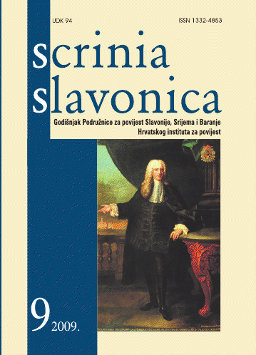
Keywords: New publications; history; Croatian history
Zoran Ladić i Ðuro Vidmarović (ur.), Povijest obitelji Zrinski. Zbornik, Zagreb, 2007. (Marija Karbić); Tomo Šalić, Vinkovački leksikon, Vinkovci, 2007. (Šimun Penava); Anna Maria Gruenfelder, U radni stroj velikoga njemačkog Reicha; Prisilni radnici i radnice iz Hrvatske, Zagreb, 2007. (Mario Kevo); Mišo Deverić i Ivan Fumić, Hrvatska u logorima 1941.-1945. Zagreb, 2008. (Mario Kevo); Davor Marijan, Slom Titove armije. JNA i raspad Jugoslavije 1987.-1992., Zagreb, 2008. (Mladen Barać); Zvonimir Šeparović (ur.), O žrtvama u ratu i miru. Zbornik radova 4. hrvatskoga žrtvoslovnog kongresa, Zagreb, 2007. (Šimun Penava); Dragica Šimunec, Vukovarska sjećanja: svjedočanstva medicinskih sestara, Zagreb, 2008. (Šimun Penava); Dubravko Halovanić, Martin Barić i Ivo Turk, Izravni demografski gubici Karlovačke županije u Domovinskom ratu (prilozi za istraživanje demografskih gubitaka Karlovačke županije koji su posljedica ratnog djelovanja od 1991. do 1995. godine), Zagreb, 2008. (Aleksandra Koprivčević); Dubravko Habek, Povijest primaljstva, porodništva i ginekologije bjelovarskog kraja, Bjelovar, 2008. (Zlata Živaković-Kerže)
More...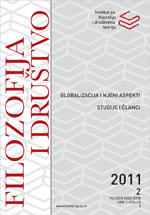
Keywords: Praxis; Korčula Summer School; critique; nationalism; Gajo Petović; Milan Kangrga; Danko Grlić; Rudi Supek
In this article the author analyzes the positions of the intellectuals from the former Yugoslavia, gathered around Praxis journal, toward nationalism, as well as nationalists’ critiques of them, mainly from Croatia and Serbia. The analysis covers up the period from the beginning of Praxis to the first decade of this century.
More...